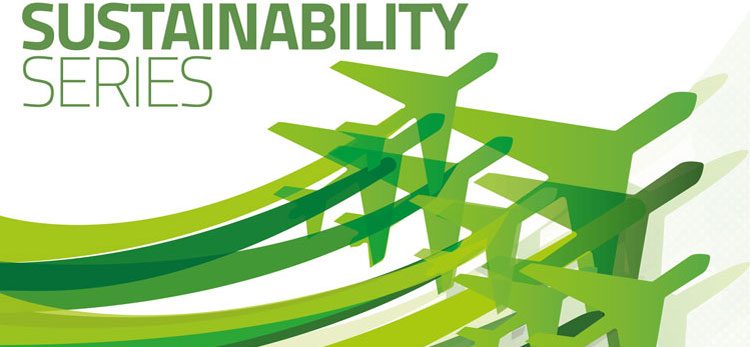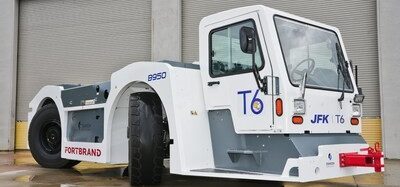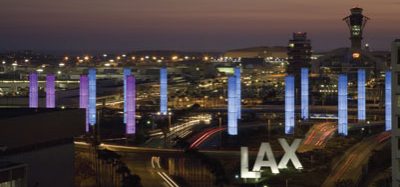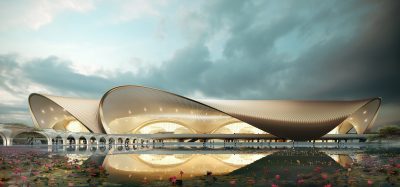Sustainability Series: Sustainable kerosene as aviation fuel
Posted: 16 August 2019 | Ron Louwerse (Director Rotterdam The Hague Airport), Willem van Genugten (Director Urban Crossovers) | No comments yet
Rotterdam The Hague Airport has recently started a study which looks into the production of sustainable kerosene from air. We spoke to Willem van Genugten (Director Urban Crossovers) and Ron Louwerse (Director Rotterdam The Hague Airport) who told us a bit more about the project.


How did the project come about?
We all want to take our responsibility in curbing climate change. The aviation industry is currently responsible for approximately two per cent of global antropogenic (man-made) CO2 emissions. With aviation expected to rise significantly in the coming decades, and other industries gradually becoming less emitting, this percentage is expected to rise to five per cent by 2050.
While the aviation industry is not part of the Paris Accord, it has committed itself to the emission reduction of 50 per cent of the 2005 exhaust levels by 2050. It is also likely that the aviation industry will see additional regulation in the future. In many European countries, including the Netherlands, aviation taxation is in place or will be soon. In addition, aviation (CO2) taxation is being discussed on an EU level. So, it is absolutely the right time for the aviation industry, whether it is airlines, fuel producers or airports, to make a difference.
That is why Rotterdam The Hague Airport (RTHA) was presented with the idea of starting a demonstration plant producing renewable jet fuel from air by Climeworks and Urban Crossovers. This demonstration plant will enable us to filter CO2 directly from the air (Direct Air Capture/ D.A.C), and refine it onsite into renewable kerosene.
The proposal coincided with the RTHA establishing the Rotterdam The Hague Innovation Airport (RHIA). This foundation has the purpose of facilitating and testing aviation innovations in hospitality, entrepreneurship, education, emergency and energy and environment. Initiating a demonstration plant for renewable jet fuel from air fits the purposes of RHIA very well.
Why is the use of sustainable kerosene better than regular aviation fuel?
Regular fossil-based aviation fuel is polluting. Like any other mobility service, aviation has to explore sustainable alternatives. Not unlike shipping and heavy long-haul road transportation, aviation cannot shift to electric power or hydrogen fuel in the short- and mid-term on the same scale as the automotive sector. Electrification is therefore only feasible on a smaller scale, e.g. a 20-seat carrier. Rotterdam The Hague Airport is also a hub for developing electric aviation.
But, for larger-scale flights over longer distances, an alternative to fossil jet fuel has to be developed in the short-term: This is where renewable jet fuels from air comes into play as a serious alternative for both fossil and biofuels.
Because we take the CO2 directly from air, we do not have to go through all of the processes that biofuel, for instance, does. We do not have to grow plants, making use of valuable land and water, to harvest the vegetation for biofuels. In the longer term (10 years from now and beyond) this is highly important since biofuels cannot provide the amount of fuel required for aviation without seriously usurping agricultural land and water that are currently allocated to food production.
The resulting kerosene can be blended to 50 per cent and fuelled into the planes that are currently in operation.
This project allows us to kickstart a more sustainable aviation right now, without having to first develop and implement costly innovations into adjusting, or even replacing, aircraft.
In addition, planes that run on renewable fuels use less fuel, and exhaust little to no fine particle matter, much less nitrogen oxide (NOx) and much less sulphur oxide (SOx) which in densely-populated areas around Schiphol Airport and Rotterdam airport are equally, if not arguably more, important as CO2.
How is it manufactured?
Based on existing technologies and renewable fuels production know-how from project partners and demonstrated on a smaller scale in several R&D projects, we will perform the basic engineering and design of the renewable jet fuels from air plant. We will also carry out a cost and business analysis for an actual production facility of commercially available renewable jet fuel from air at the particular site of Rotterdam The Hague Airport.
With the pilot plant, we connect a chain of modular innovative but proven technologies:
- Direct Air Capture (DAC) technology; capturing CO2 from air; Company: Climeworks
- Co-Solid Oxide Electrolyser Cells (Co-SOEC); producing so-called synthesis gas (CO + H2) from CO2 and water; Company: Sunfire
- Fischer-Tropsch Synthesis (FTS); converting the synthesis gas into liquid hydrocarbon products; Company: Ineratec
- Refining; converting FTS hydrocarbon products into kerosene with Jet A-1 quality; Company: EDL.
Can the manufacture keep up with the pace of expansion in the industry?
This project kickstarts the production of renewable fuel from air for the commercial market. It lifts production from a lab level of approximately one litre a day or per week, to approximately 1,000 litres a day. This is a significant step forward, but this number does not come close to the required volumes that aviation consumes on a global market.
All innovations in the chain we provide are of modest size (container shipping size) and modular. This makes it very suitable for a range of production scales and, in theory, on a footloose basis. It allows the production of renewable fuel in remote conditions, but also allows a significant scale-up towards the refinery of large volumes. This scale-up takes time and resources, but with this demonstration plant we aim to kickstart its development.
Are there any dangers surrounding the use of kerosene?
Once refining is complete, the renewable fuel meets the exact same specifications as other Jet A fuel. It can be tanked into planes that are operational today and has the same safety status as any other kerosene.
How will the innovation campus fit into the landscape of the airport? Is there not limited room?
Due to the modular design of the technologies we use, the Pilot Plant on the innovation campus will be of a relatively modest size. As such, it will not be a large-scale, unhospitable refinery typical to those found in large petrochemical complexes. It will instead be an attractive facility on a scale that blends in well with the surrounding buildings of the campus, which include small-scale hydrogen production, a large solar field, electric and hybrid flying facilities (together with the Technical University of Delft) offices and hangars. Because this will be a world first, we are planning a designated visitor centre to receive and inform visitors such as school classes, interested business and government delegations, as well as travellers.
Does this project have legs for expansion?
The aim of the project is to scale-up. It is the only way renewable jet fuel from air can make a true difference to the worldwide emission levels of CO2. Such a scale-up will most likely take place in the Rotterdam harbour complex, providing a much needed second life to the currently fossil-based petrochemical complex, or similar sites elsewhere.
When will we see the first renewable kerosene powered flight?
If all goes according to plan, then we expect to have the first flight with our blend take off by 2022.
New report from International Airport Review: Securing Airports in an Evolving Threat Landscape
International Airport Review has brought together top voices from across the global aviation security sector, including International Civil Aviation Organization (ICAO), ACI World, Fraport, Qatar Civil Aviation Authority, Winnipeg Airports Authority, and Smiths Detection to examine today’s most pressing airport security challenges and emerging threats.
This expert-led report provides a strategic assessment of the vulnerabilities facing airports in 2025, encompassing cyber-attacks, drone incursions, evolving geopolitical risks, and emerging technologies.
The result is a practical, insightful guide to strengthening airport resilience, anticipating risks before they escalate, and keeping your airport off the front page
Download the report for free and stay ahead of the security curve – READ FOR FREE NOW!
Related topics
Emissions, Sustainability, Sustainable Aviation Fuel (SAF), Sustainable development

















